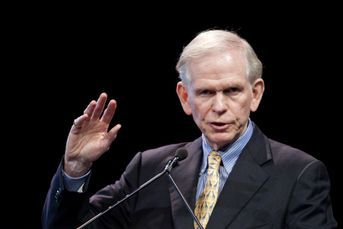Detroit is now the biggest U.S. city bankruptcy
Michigan governor calls it 'necessary step' and 'last resort' to restore fiscal health.
Detroit (9845MF) became the most populous U.S. city to file for bankruptcy, seeking court protection from creditors while it tries to eliminate a budget deficit and cut long-term debt.
“I authorize this necessary step as a last resort to return this great city to financial and civic health for its residents and taxpayers,” Michigan Governor Rick Snyder, a Republican, said in a letter today authorizing Kevyn Orr, the city’s emergency manager, to file the petition.
Michigan’s largest city has seen its population decline to 707,000, down 7 percent since 2010, according to U.S. Census data. Median household income was less than $28,000, compared with $49,000 statewide, and more than 36 percent of residents lived in poverty as of 2011, Census data show. The median home value of $71,000 was barely half the $137,000 value statewide.
The city listed assets and debt of more than $1 billion in a Chapter 9 petition filed today in court in Detroit. Chapter 9 of the U.S. Bankruptcy Code is reserved for municipalities and differs from the rules used by bankrupt companies in Chapter 11.
Orr warned in May that the city might run out of cash. His proposal to restructure more than $17 billion in debt and long-term obligations includes cutting pension payments for public employees, ending cost-of-living increases, removing some workers from the system and making the rest pay more.
‘Significant Restructuring’
“Without a significant restructuring of its debt, the city will be unable to break the cycle of damaging cutbacks in essential municipal services and investments,” Orr said in a report.
William Nowling, spokesman for Orr, didn’t immediately respond to requests for comment on today’s filing.
A state court judge today temporarily barred Snyder and Orr from taking any action that would allow cuts in pension benefits for city retirees, while allowing the bankruptcy to proceed. The pension funds sued yesterday seeking to stop the filing.
Detroit joins Jefferson County, Alabama, and the California cities of San Bernardino and Stockton in bankruptcy. Years of job losses at U.S. automakers intensified a decline that began in the 1950s, when white homeowners began moving to the suburbs, Scott Martelle, author of “Detroit: A Biography,” said in an e-mail before the filing.
“As the tax base eroded, basic city services eroded, too,” he said. Detroit today “is too big geographically — 140 square miles — for its dwindling and impoverished tax base to support.”
Financial Crisis
In February, a state report concluded the city was in the midst of a fiscal crisis, a finding required under Michigan law before the city could be eligible to seek court protection from creditors.
Chapter 9 will give Detroit an advantage over companies using Chapter 11 to reorganize. Unlike companies, municipalities don’t need to ask the bankruptcy court for permission to pay any bills they ran up before filing for court protection, including wages, utility bills and rents.
That means creditors can’t put as much pressure on a city over its spending habits, as sometimes happens in Chapter 11 cases. Chapter 9 creditors also can’t offer their own reorganization plan and aren’t entitled to form an official committee with legal fees paid by the municipality. Unsecured creditors typically have those rights under Chapter 11, which is used by companies to try to stay in business and reorganize.
Biggest Drains
Among the biggest drains on the city’s general fund, which pays for police, fire and other basic services, are health benefits paid to 18,500 retired city workers, mostly former police and firefighters, according to Orr’s May report. Without changes, the city will pay $163 million for retiree health-care costs in the next fiscal year, which starts July 1, the report found.
The city has been operating under a financial stability agreement with the state. With the state’s help, the city issued $130 million in new bonds, part of which was used to pay off short-term debt. To get access to the remaining proceeds, the city was forced to hire a restructuring firm and, in December, the law firm of Miller Canfield Paddock & Stone Plc (1381L) to help formulate a recovery plan.
Detroit ran short of cash last year and was forced to borrow $92.2 million from other funds, including its solid waste, street and risk management funds. At the end of June, the city also owed its retirement funds $60.5 million, according to the audit.
Detroit’s bond ratings were cut deeper into non-investment grade last year by Moody’s Investors Service, which cited the possibility of bankruptcy or default within two years.
The case is City of Detroit, 13-53846, U.S. Bankruptcy Court, Eastern District of Michigan (Detroit).
(Bloomberg News)
Learn more about reprints and licensing for this article.








